PLANT RED LIST
South Africa resorts to triage as casualties pile up in devastating rare succulent poaching spree
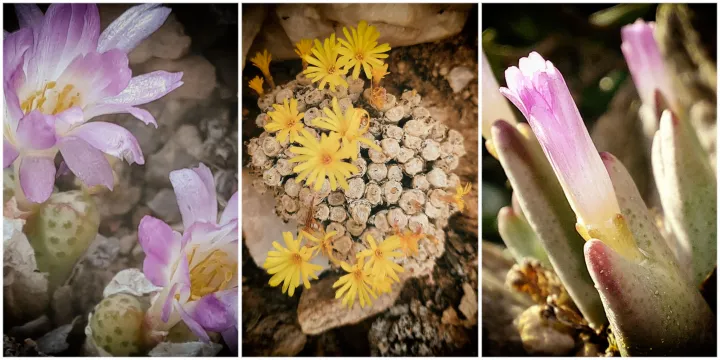
Overwhelmed by the sheer number of bleeding soldiers at the Battle of Metz in 1793, a French military surgeon was forced to develop a rapid classification system to determine which of the wounded troops needed treatment most urgently.
More than 200 years later, the triage system developed by Baron Dominique Larrey during the Napoleonic wars is being used locally to stem the casualty list of some of South Africa’s most threatened succulent plant species.
“We have been getting between three and seven plant confiscation cases coming in every week, mostly from the Northern Cape – and the number of plants in each case can vary between 1,000 and 10,000 plants,” says Dr Carina Becker du Toit, a senior botanical scientist at the sharp end of rescue operations for confiscated succulent plants in the Western Cape and Northern Cape.
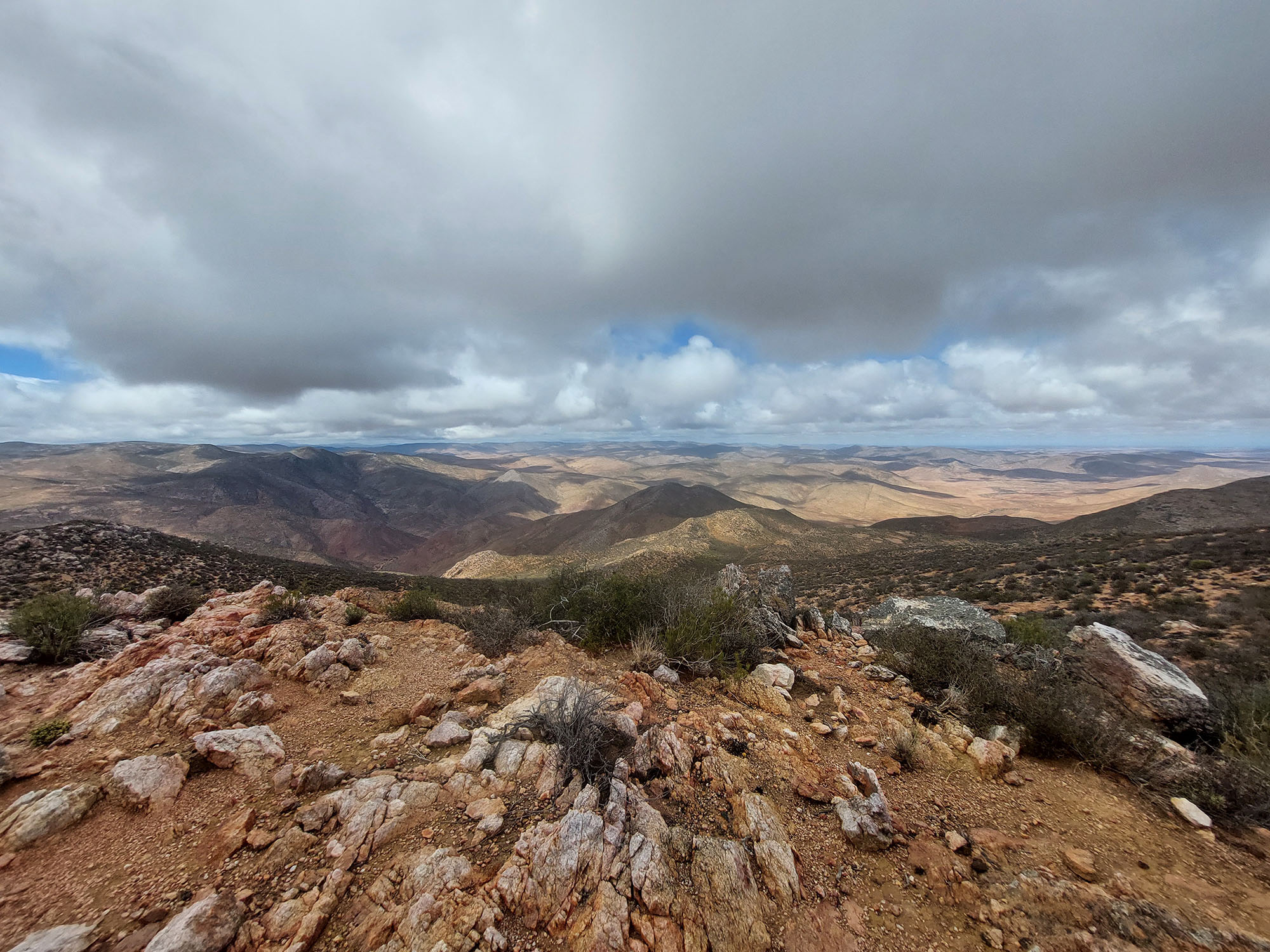
Succulent plant poachers often operate at night in the remote and arid environments of the Northern Cape. (Photo: Sanbi)
In the modern medical context, the colour-coded triage system is still used by paramedics and emergency room workers to filter patients for priority surgical and hospital treatment in the wake of serious accidents and disasters.
In the new conservation context, the botanical casualties are graded mainly by the rarity of each species on the Red List of the International Union for the Conservation of Nature (IUCN)
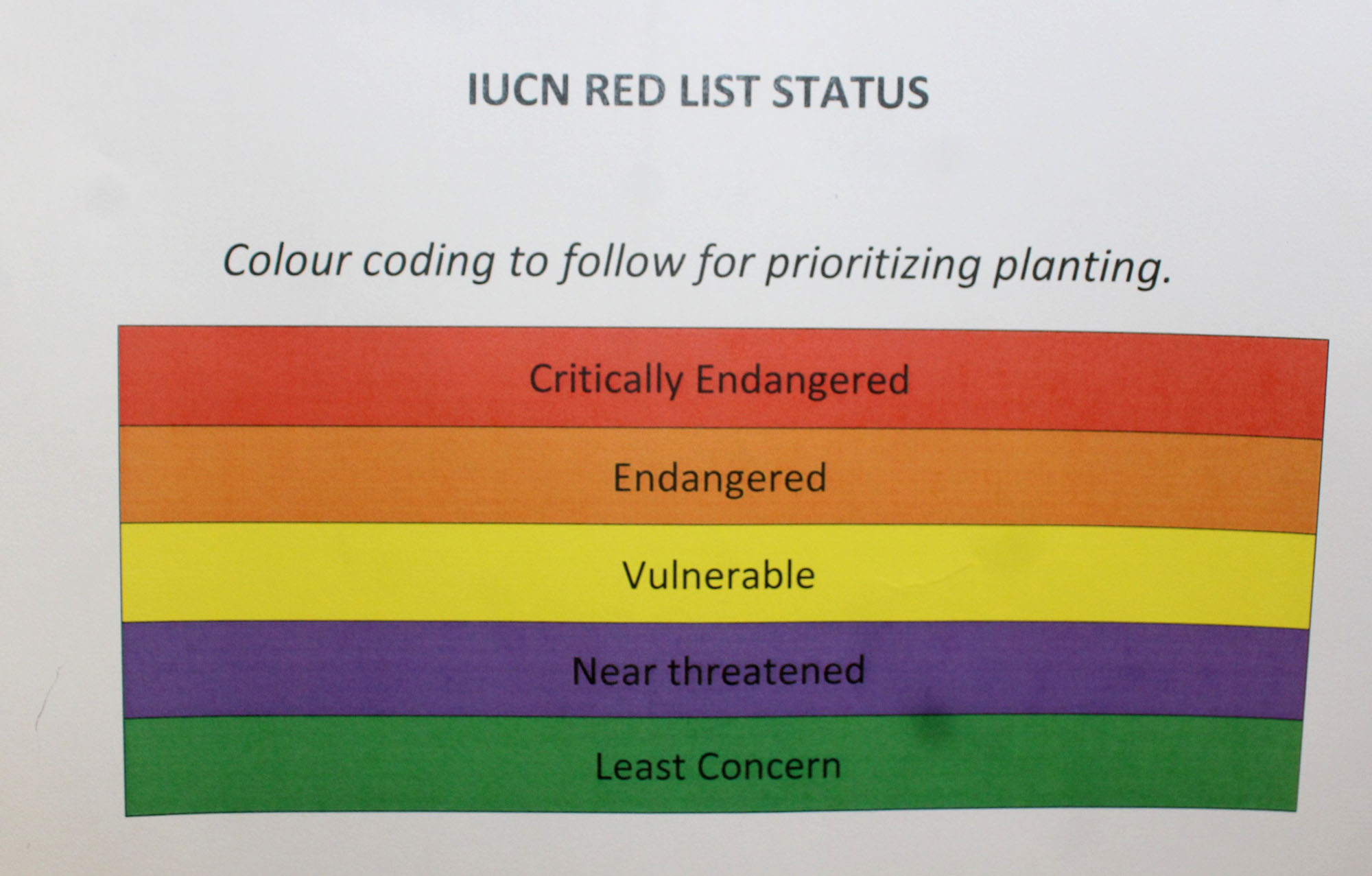
The colour-coded Red List used for succulent plant triage. (Image: Supplied)
While Becker du Toit would like to save as many plant patients as possible after they have been ripped from the veld, there is just not enough space or capacity in the few botanical “hospitals” in these two provinces to sustain their life.
This comes at a time when tens of thousands of poached succulent plants have been confiscated since the Covid lockdown of 2020.
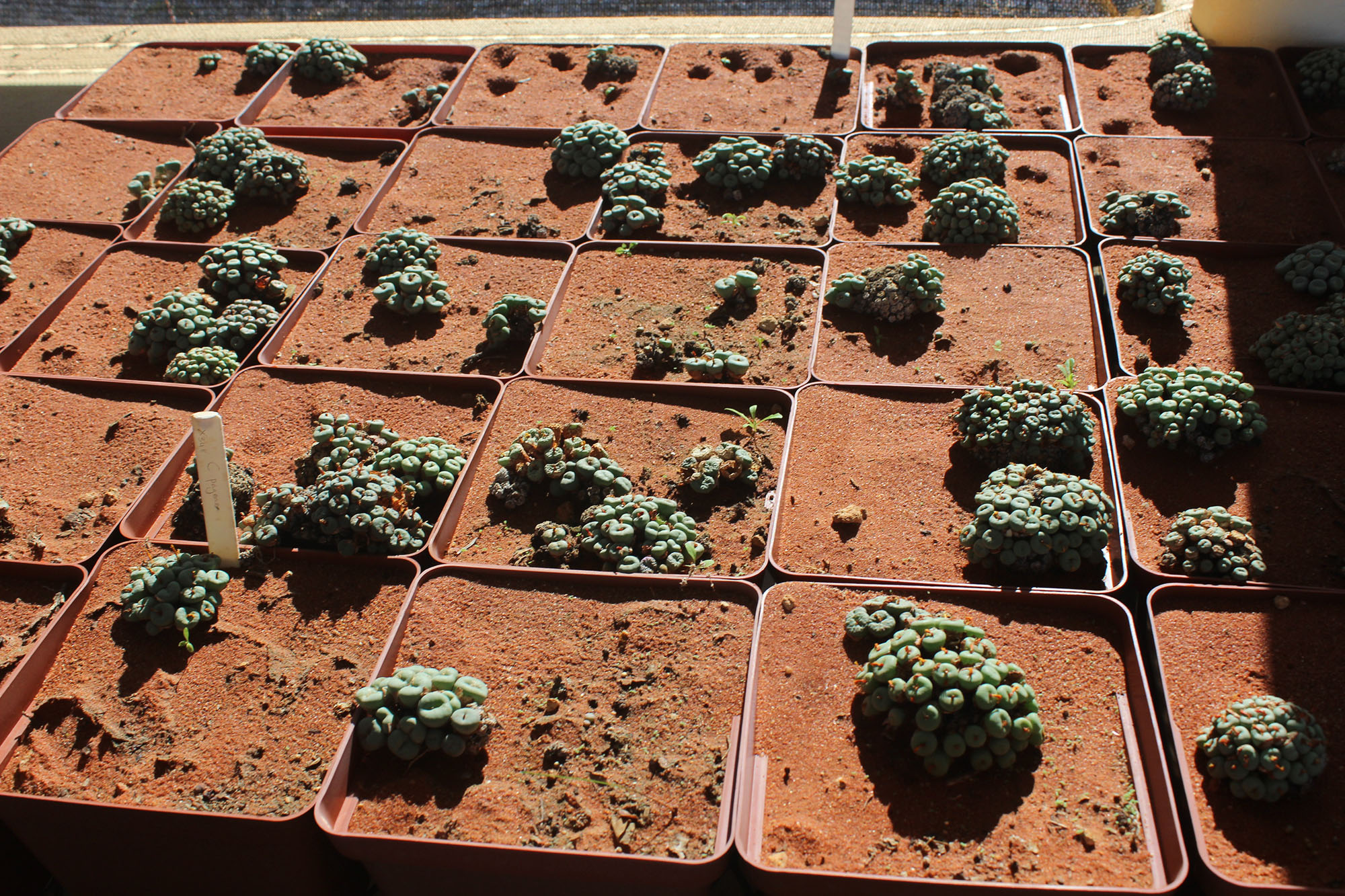
Some of the tens of thousands of succulent plants rescued from plant poachers. (Photo: Tony Carnie)
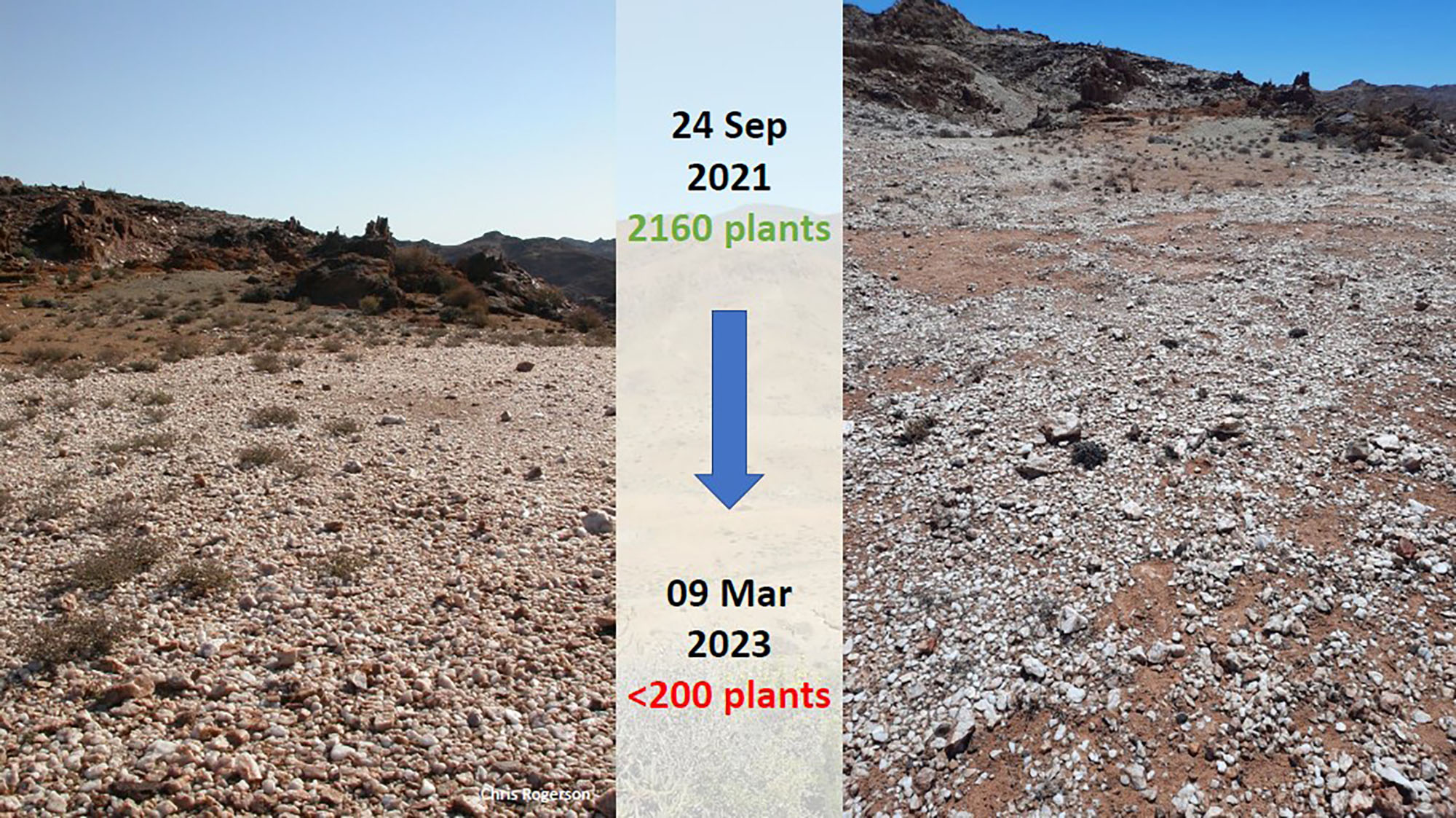
Just one ‘before’ and ‘after’ example of a site stripped of its globally unique plant life in the Northern Cape. (Image: Sanbi)
“Though some of the plants are quite tough, most have been stored in plastic bags or other containers for some time,” she says, “So when they arrive at our facilities they are in urgent need of soil, trays and watering.”
That means Becker du Toit and her colleagues in the SA National Biodiversity Institute (Sanbi) face a grim choice of which plants to save, due to the limited available resources.
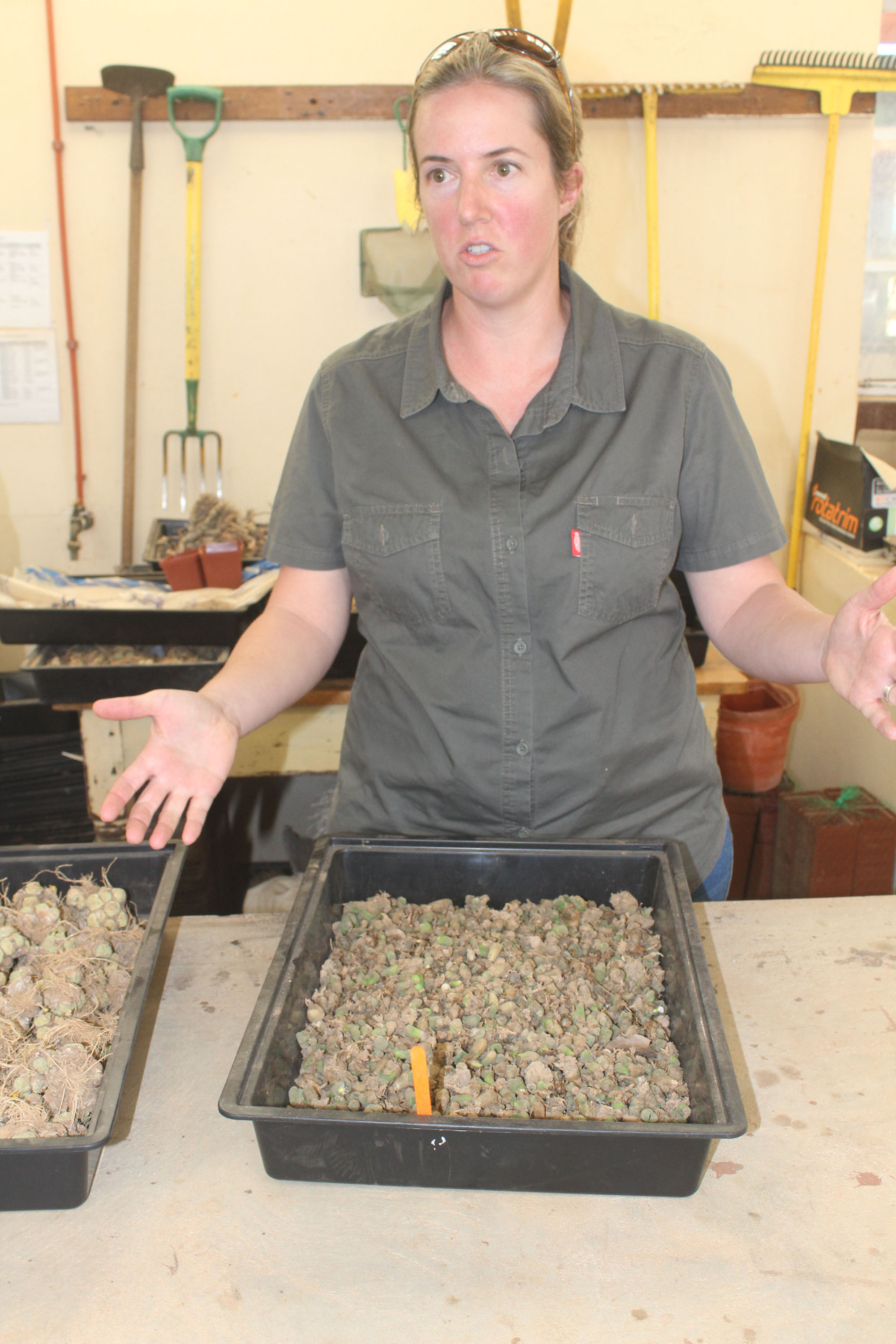
Carina Becker du Toit outlines some of the tough choices that have to be made when choosing which plants receive priority treatment. (Photo: Tony Carnie)
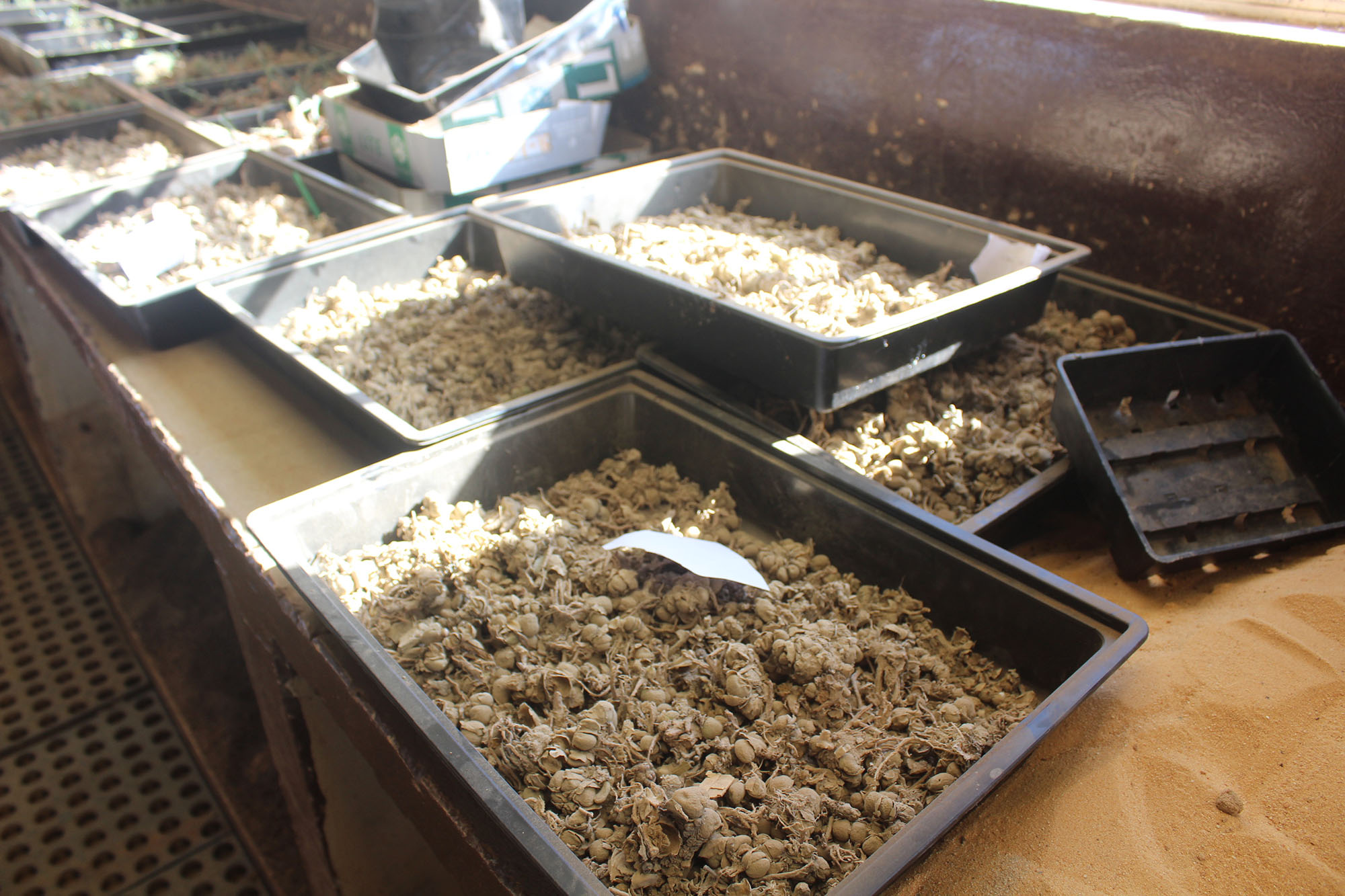
Part of the long line of patients awaiting treatment in one of the emergency rooms operated by the SA National Biodiversity Institute. (Photo: Tony Carnie)
“We focus on the ones that are closest to extinction on the IUCN Red List and those known to exist only in a single location.”
It is these species that will be marked with a red or orange marker for priority care, while those with green markers (least concern category) have to take their chances – should space and staff become available.
Until recently, many of the confiscated plants had been stored in hot conditions, piled up in trays and largely unclassified by their rarity in the waiting rooms. Becker du Toit often had to sort through them laboriously and draw up priority care protocols. To complicate things, the severity of the recent poaching onslaught on some species means that their conservation status is now dynamic.
“The Red List for Conophytums had to be updated in 2020/21 because of the poaching surge – and all Conophytums species are now threatened,” says Sanbi project manager Ismail Ebrahim.
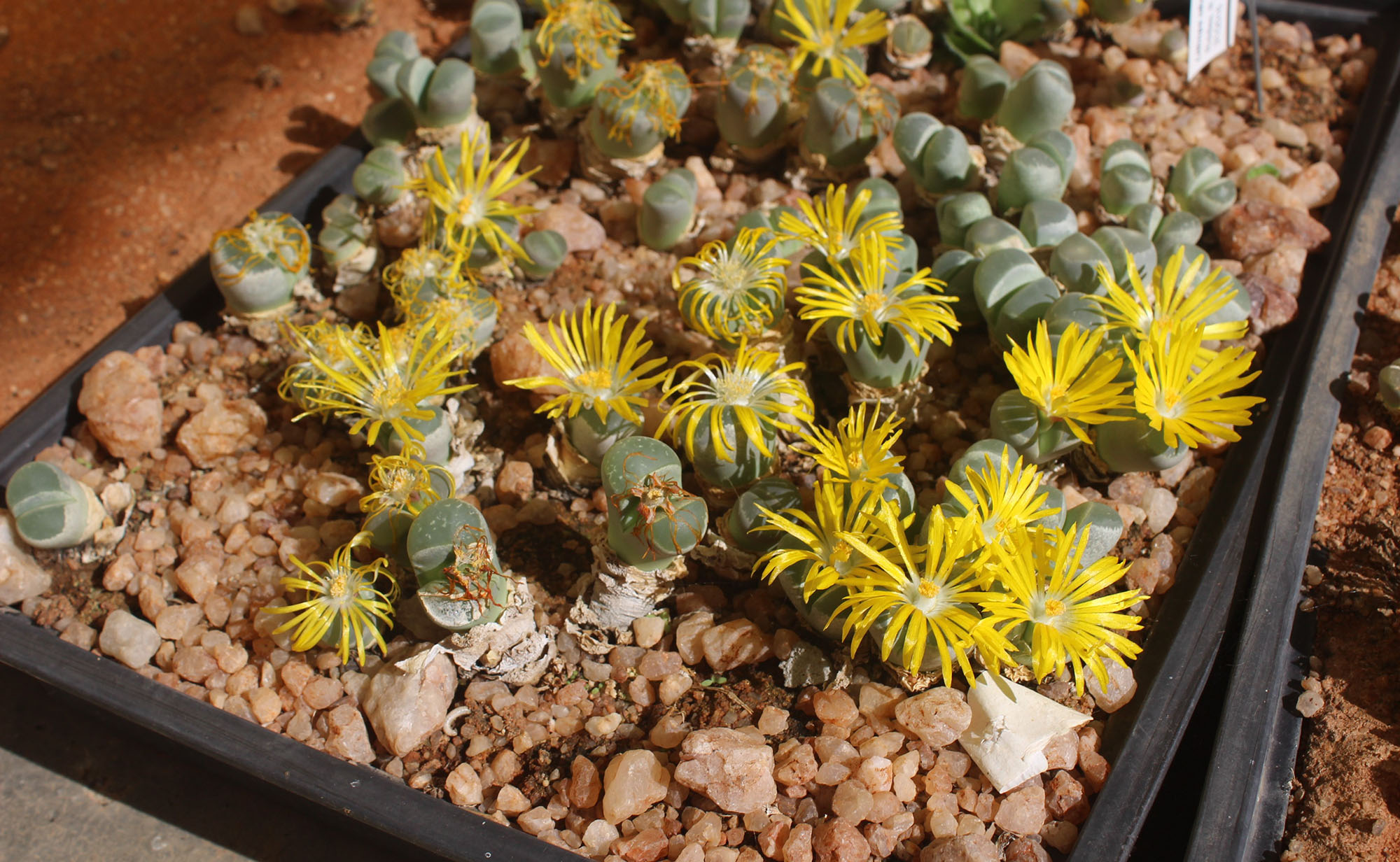
These Conophytum plants rescued from plant poachers may have another shot at life. (Photo: Tony Carnie)
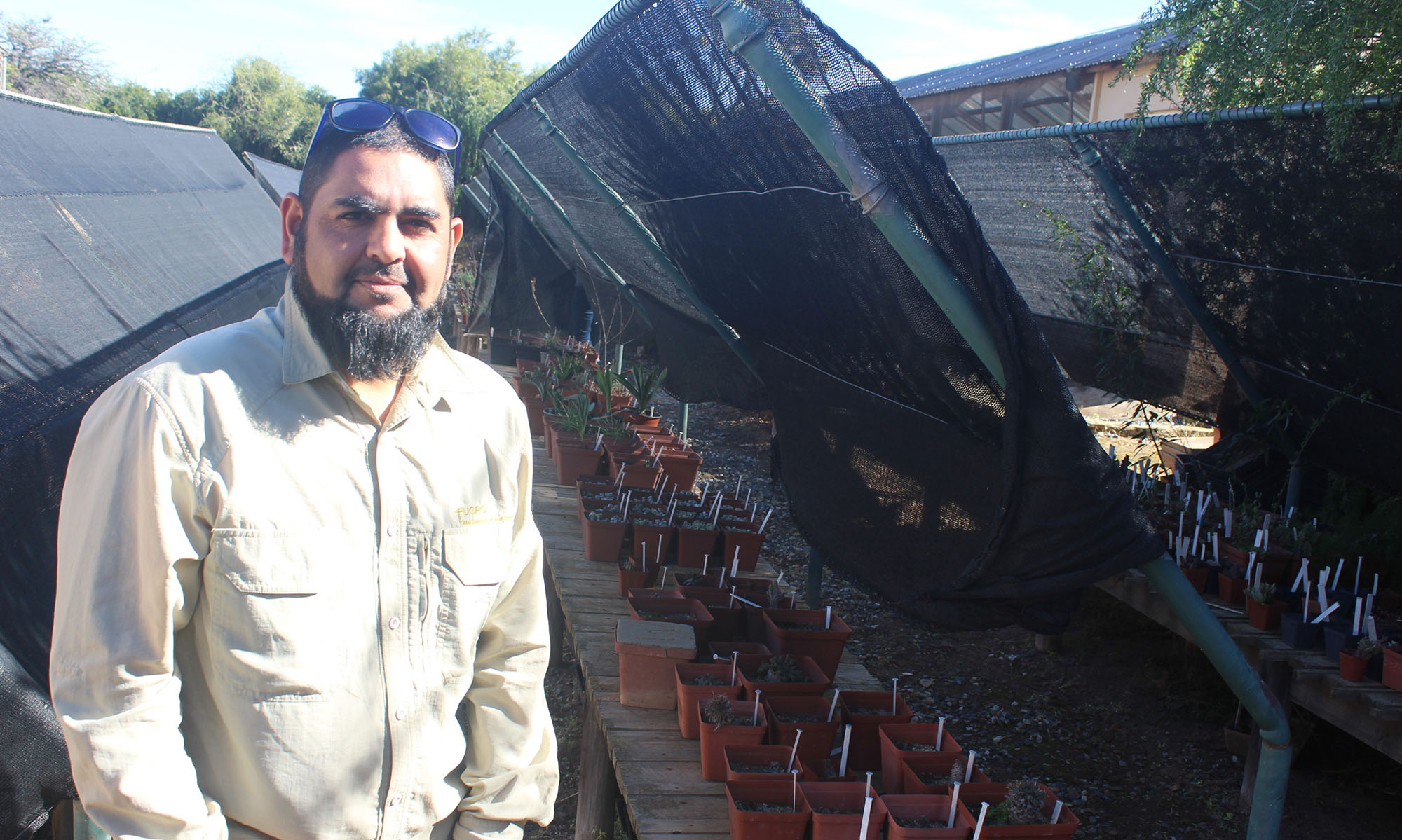
SANBI project manager Ismail Ebrahim surveys a long line of plants in a makeshift recovery ward. Some will be returned to their original native habitat, if located. (Photo: Tony Carnie)
While some members of this plant family were previously listed under “least concern”, most now fall in the “endangered” or “critically endangered” categories.
Small populations, limited ranges
One of the reasons for this, Ebrahim explains, is that some local succulents have very small populations or limited geographic ranges. In some cases, they are found in just one place.
“The entire global population of an endemic plant can be wiped out from their wild habitat in a single day by illegal plant collectors,” says Ebrahim, suggesting that it is vital to raise awareness about the plant poaching crisis and to instil a greater sense of public custodianship.
As things stand, the death or demise of rare plant families seldom arouses the same sense of public outrage or sentiment as the slaughter of iconic animals like rhinos, or the abuse of domestic pet species.
Plants live and breathe and many are beautiful. But there is not quite the same sense of connection as with our animal brethren. All the same, potted plants are increasingly prized as both ornaments or relatively low-maintenance “pets” by city folk across the world, in an era where large swathes of humanity have been cut off from the natural world and confined to more sterile urban environments
Global demand
If they were multiplied commercially in nurseries this would not be such a big deal, but the increasing global demand for smaller, brighter or unusual plant species is reaching the point where extinction is now a real possibility for many species due to illegal and indiscriminate plant collection.

CapeNature environmental crime investigator Paul Gildenhuys. (Photo: Tony Carnie)
Paul Gildenhuys, a founding member of CapeNature’s environmental crime unit, has little doubt that South Africa’s rare succulent plants fall squarely in the crosshairs of this burgeoning global demand – and is increasingly driven by illegal trade syndicates that also deal in rhino horns, elephant tusks, abalone, armaments or drugs.
“Rare succulents are now just another commodity for crime networks that trade in low-risk, high-reward fauna and flora products,” he says.
Gildenhuys and his colleague Carl Brown find it difficult to pinpoint the exact reasons why succulent plant smuggling has “exploded” over the past three or four years, but say the evidence points strongly towards growing demand by collectors in China and some of its neighbours.
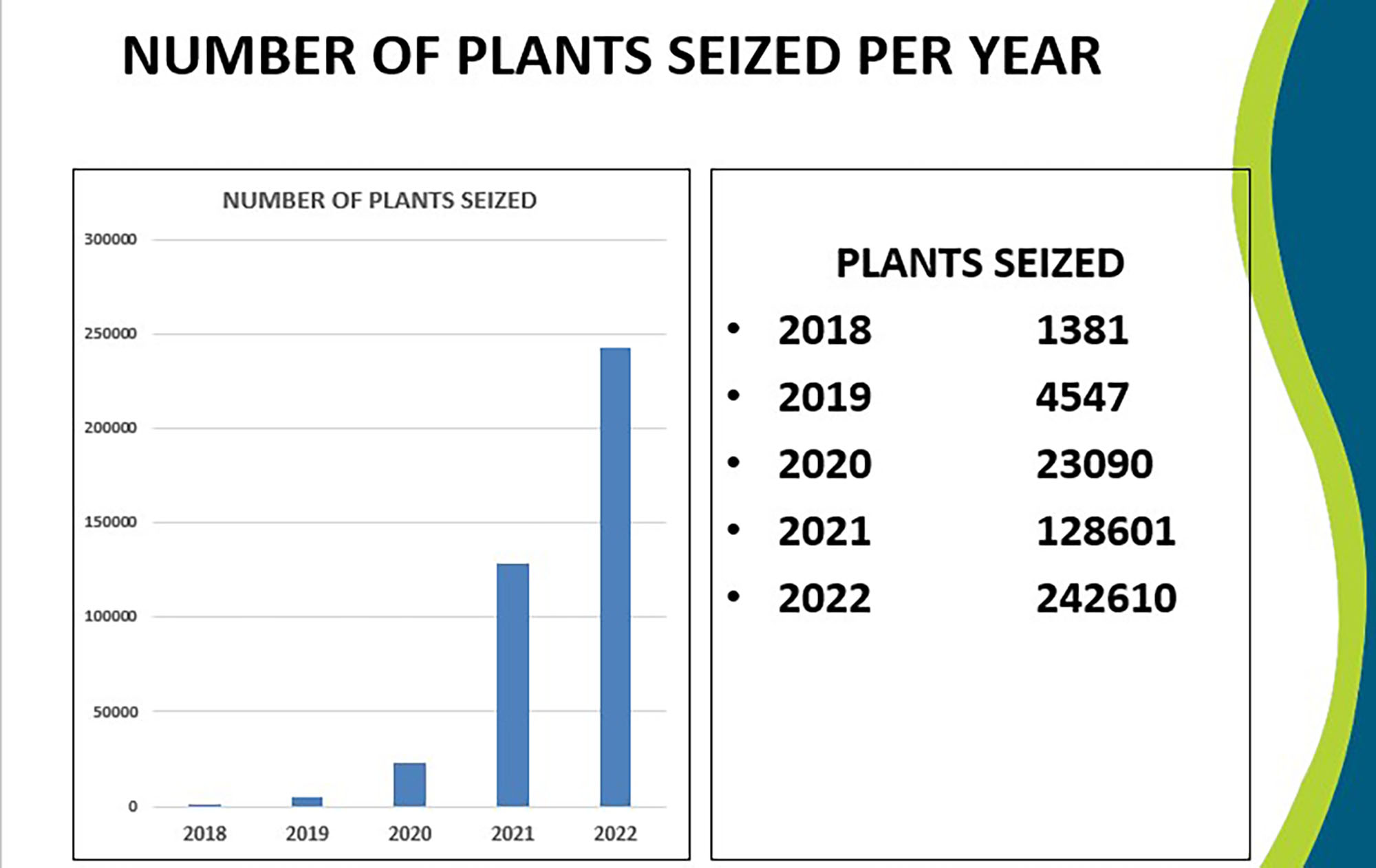
A graph of recent succulent plant seizures, in the Western Cape alone, shows an almost vertical trendline in illegal poaching. (Graph: Paul Gildenhuys CapeNature)
Gildenhuys says local scientific and botanical literature has been translated into Mandarin recently, while social media and new succulent plant craft markets have also played a big role in stimulating consumer demand.
Back in 2001, when Gildenhuys dealt with his first plant poaching case, the culprits were mostly specialist collectors, often from Europe or the United States. The trade has since moved sharply eastwards – most strikingly after the Covid lockdown.
Whereas most foreign plant collectors used to visit South Africa in person to scout out locations or collect plants, there has been a distinct switch to hiring South African collectors – often poor or unemployed rural residents – who strip sites indiscriminately to collect as many plants as possible.
‘Covid changeover’
“We call this the ‘Covid changeover’,” says Brown. “Before lockdown, we were mostly seeing Czechs, Slovenians and other European collectors.
“There is a danger with ethnic profiling, but the reality is that most of the stuff is now going to China. The Chinese economy is growing and there is a great interest in plants in many cities. Most people live in a flat in a high-rise building and there is a desire to have succulents to decorate their apartments.”
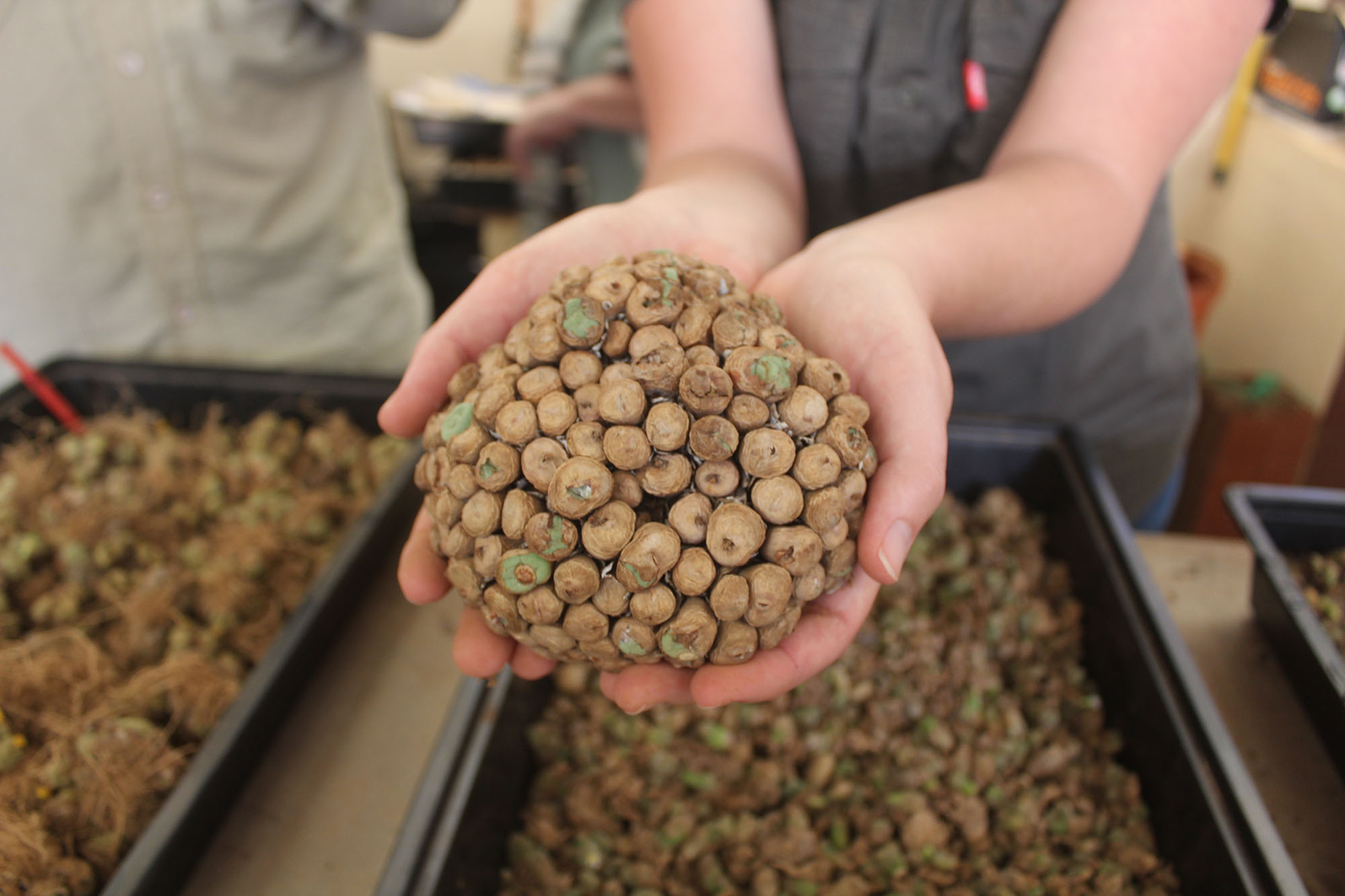
Some of South Africa’s succulent treasures grow for up to 150 years and it is these plants that are often targeted. (Photo: Tony Carnie)
Unfortunately, wealthier collectors are also on the lookout for “character” plants – sculpted into unusual shapes by over a hundred years of exposure to tough, arid environments – rather than the more common species and shapes available from mass-production nurseries in China.
The concern around this growing illegal trade to China has also manifested itself in the recent launch of the “Clean Internet for Conophytum” campaign by the China Biodiversity Conservation and Green Development Foundation.
According to the foundation, campaign leaders recently wrote letters to three leading Chinese e-commerce platforms (Xianyu, Tencent and Taobao) urging them to remove all illegal wild Conophytum products from their websites. They also suggested that buyers be discouraged from illegal transactions via a new “ecological civilisation” awareness campaign.
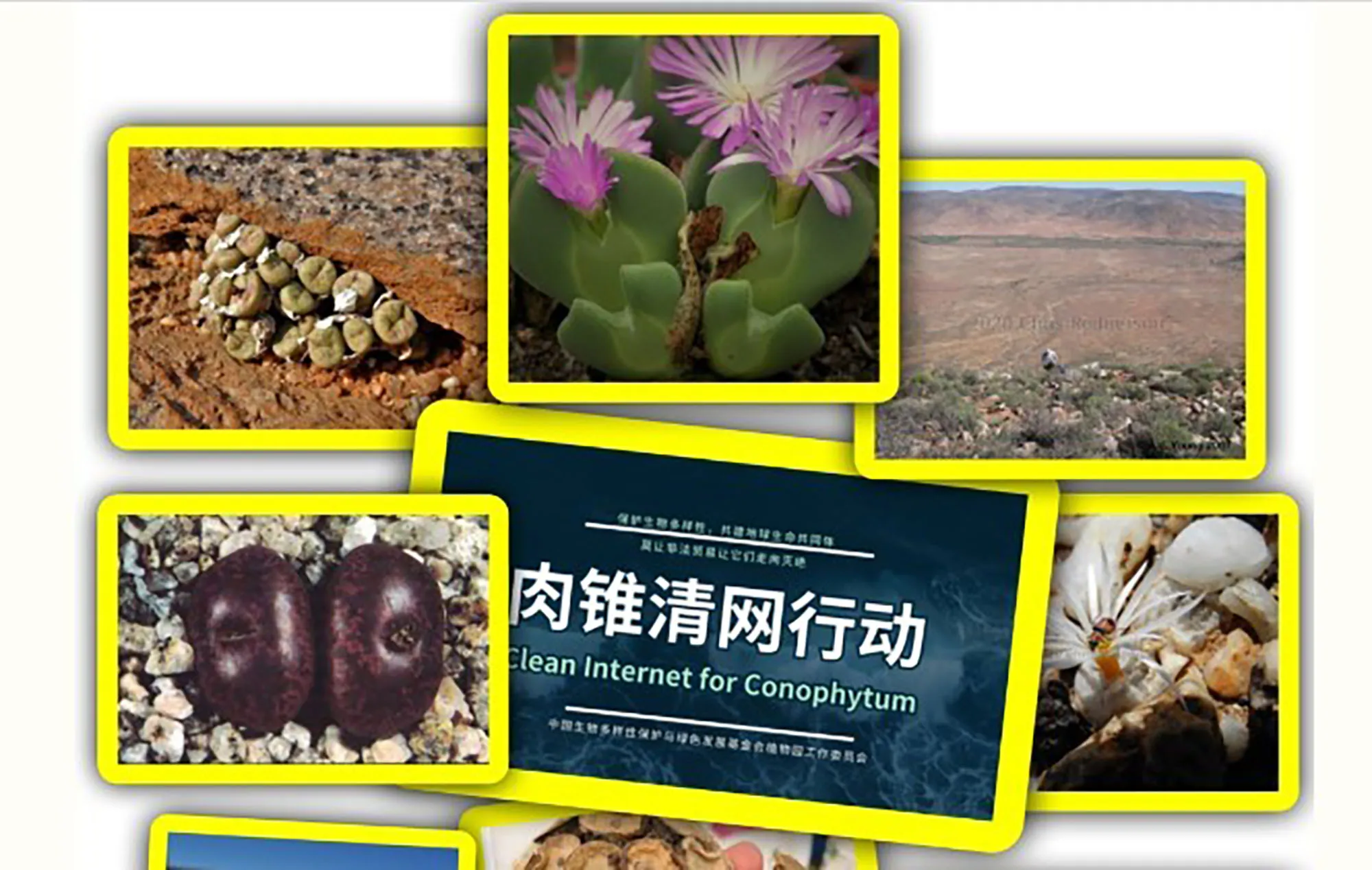
China launched a ‘Clean Internet for Conophytums’ campaign in March 2023. (Image: Supplied)
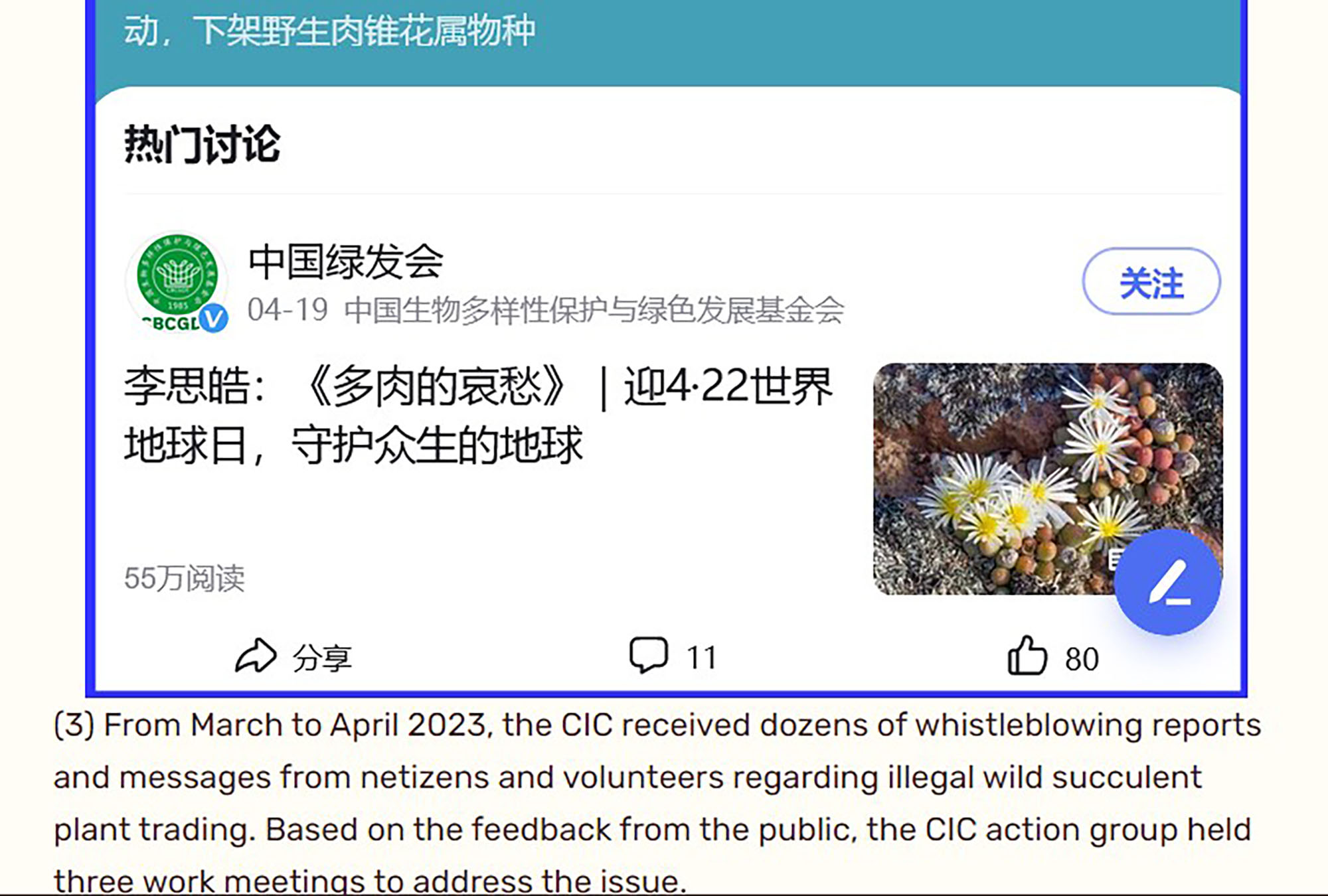
Screenshot from a Chinese ‘Clean Internet’ campaign to reduce the smuggling of rare succulent plants from South Africa. (Image: Supplied)
But the campaign appears to have had very little impact so far on what Becker du Toit describes as a “tsunami-wave” of poaching over the past three years.
At a recent media briefing, CapeNature officials outlined some of the methods used by smugglers to transport plants from remote locations via the postal/courier system, or by road to Cape Town or Gauteng.
Some examples include hiding plants inside pockets of onions, in sealed toy boxes destined for China via FedEx, or concealed in decorative pillows, boxes of biscuits or dried fruit.
Based on recent confiscation data, Sanbi estimates that more than 1.5 million South African succulent plants have been removed from the wild over the past three years alone. DM





















 Become an Insider
Become an Insider
Just a disgrace,lost for words.Ìs there nothing private sector can do,cause goverment doesn’t care
Interesting that the covid period brought an increase in poaching. This points to the economic space of poached plants. In this case it’s rarety. In the conservation area where I live we have had a hectic upswing in rooiwortel poaching (bulbine latifolia) which is a medicine plant used and sold on the black market for around R400 per kilo. The conundrum exists. People feed their families with that money. Families that would go hungry. Hungry people, people left on the fringe of the local economy with no options. Post covid saw a major wave of poaching with people even arriving from big cities to collect. By the time SANParks confiscates the stash, it’s too late. I’m not sure what the answer is. It’s a bit like we keep closing the door after the horse has bolted and that’s not a sustainable management strategy. In terms of replanting on the scale reported in this article, it’s like kick- fighting to the death in the warm-up arena.
South Africa is being plundered on every level. Literally devastated for short term gains. The future of the country is being stolen from generations to come.
Mike Spies of Namakwa Toere/ Namaqua Tours based in Van Rhynsdorp wrote about this in the school text Please Like What you See & other Stories published by Best Books, 2022 (ISBN 978-1-77607-318-4)
Mike and his associates have been active in raising public awareness. But as the article here clearly shows, the problem is huge.
Hello Daily Maverick, can you please add how people can support the SANBI succulent programme. Donations? Acting as a foster parent for non-threatened species? Driving plants to release sites once they have recovered?
I agree Fidelma, maybe donations can be used for rewards given to local, poor unemployed people for reporting and protecting plants rather than harvesting them in the wild to sell them to make a little money. I think a fostering program is an excellent idea.
As a concerned South African who values our natural heritage, I would love to volunteer to help with sorting, data logging, relocation, anything. Who do we contact? Do they accept volunteers?
Another gap that the criminals have taken. This government should just hand over all of its functions to the private sector. Tired of watching the useless and despicable once destroy everything it presides over!!
Both SAN Parks and Cape Nature are ill equipped to win the battle against poachers, seeing the enormous increase since 2019. Prosecutions are rare for plant poaching and the argument of poverty surfaces regularly – in spite of the millions of desperate South Africans who do not resort to crime and plunder to feed their kids. A radical intervention is needed or the destruction of rare and precious biomes will continue on our watch.
What do we have to do to get these brutes to stop decimating the environment ? If it’s not elephants and rhinos it’s endangered plants. This makes it clear that all the verbiage about First Peoples living in synch with and protecting the environment is a load of hogwash. Given the opportunity these savages will decimate any environment they find themselves in. Once again, not something that happened under the NP regime.
What a nasty, stupid, racist comment!
is there nothing sacred in this beautiful country anymore?
Can’t Cape Nature, SANBI and Kirstenbosch open indigenous nurseries in these stripped areas: meet with and educate the locals on the value of their succulents and the market for them (including that once gone, there will be no more income), put up nurseries and empower them to propagate and grow more of the plants for an export market?
So: find a funder – they’re usually EU/UK, but what about Chinese? Work with their China Biodiversity Conservation and Green Development Foundation to find a sponsor
– find a local team of botanists to teach and educate the locals on plant requirements and basic nursery skills so that they can run their own nurseries & succulent propagation
– ask the Chinese organisations to assist our locals to set up an export system, so that they have a market that will purchase them.
The most basic of Maslow’s Hierarchy of needs are not being met for these communities: when you are that poor, you don’t care about plants – you’re only trying to put food on the table.
There is a surge in gardening and landscaping with succulents and low water requiring plants in South Africa – in the Western Cape as well, in particular following the severe drought we had a few years ago and potential ones to come. The market for succulents will keep growing locally and clearly it is growing in the largest population in the world, so surely a long term market for local growers?
Definitely a market out there for prospective growers. That could largely eradicate the problem
Again our other best friend, China, comes up as raping this continent
continues and the politicians look on and share in the spoils. How utterly disgusting!
Why do they and their vulgar Chinese and Russian partners in crime not care about anything? There is no vision, no under-standing, no sense of responsibility, respect or decency. No pride or shame. Nothing is maintained or nurtured or protected – not plants or children or animals or women…
They personify greed and lust and cheap consumerism – patriarchal posturing driven by psychopathic levels of immorality to feed their egos and pockets.
Ans so, in the end, because of these sick people and countries, there will be nothing left. Not even a vygie.
Kirstenbosch and Sendelingsdrift have nurseries that are trying to keep some of the thousands of rescued plants alive – and it’s heartbreaking to see some of the conophytums especially, that have been ripped out of their habitat after growing for decades. Possibly the only solution is to farm these plants out, literally, to people who can grow and multiply them, so as to saturate the market for these plants legally. It worked for Lithops, apparently: so many are now grown in China and elsewhere that the poaching demand has dried up.
There is nothing that I would not blame on this incompetent government. Poor people have been given nothing, so poaching, whatever it may be, is one of the few ways for them to survive. Sadly everything in this beautiful country is being destroyed.
Thank you Wendy and HeidiT for your intelligent answers.
Poverty is not the sole driver of crime but in South Africa it plays a major role, where the vulnerable are the foot soldier for the unscrupulous. We need to address the rampant poverty which has both historic (colonialism and apartheid) and current causes (massive corruption, criminality and rapacious capitalism) else, literally, the ‘poor will eat the rich’.
Thank you to the DM for publishing this important story. The concern is real because we are witnessing the wholesale destruction of unique flora and ecosystems in the space of a few short years. WWF South Africa and SANBI have been working with the government, local communities and others to address the issue and have identified a number of key interventions. These have been captured in a national action plan (which you see on the SANBI website). But, as pointed out by some of the comments here, there is an urgent need for more capacity and resources for implementation and so the funding issue is highly relevant.